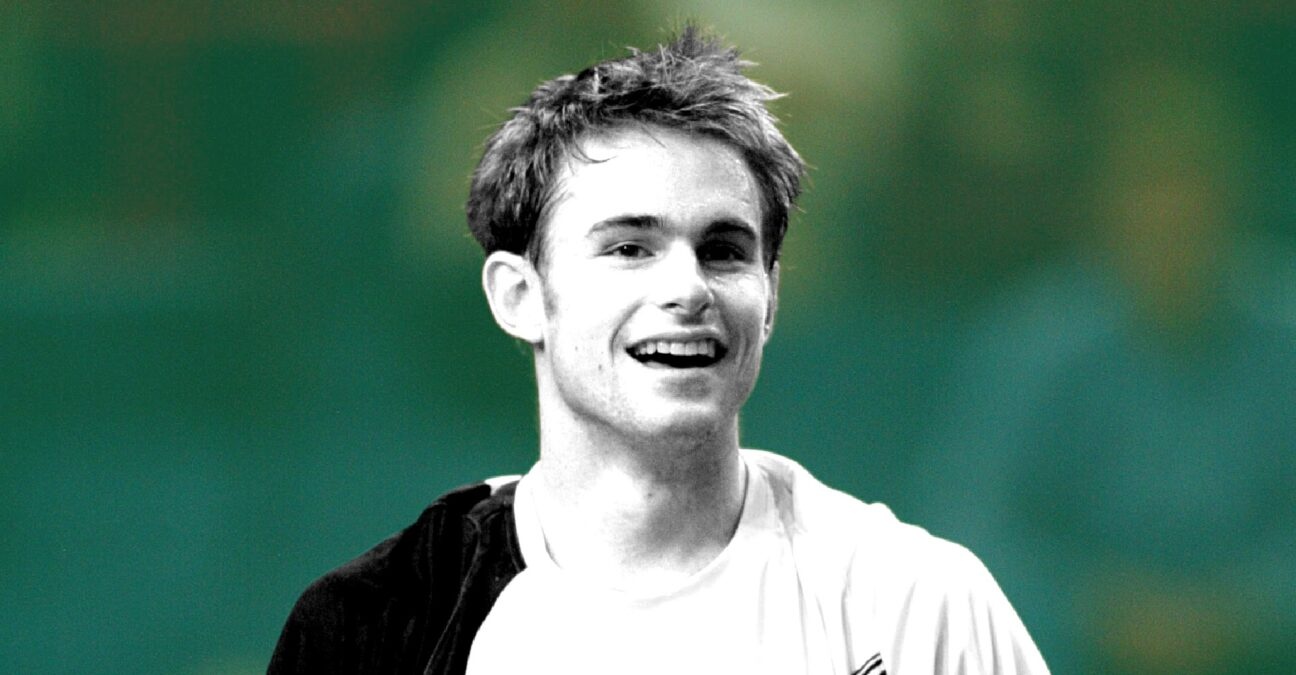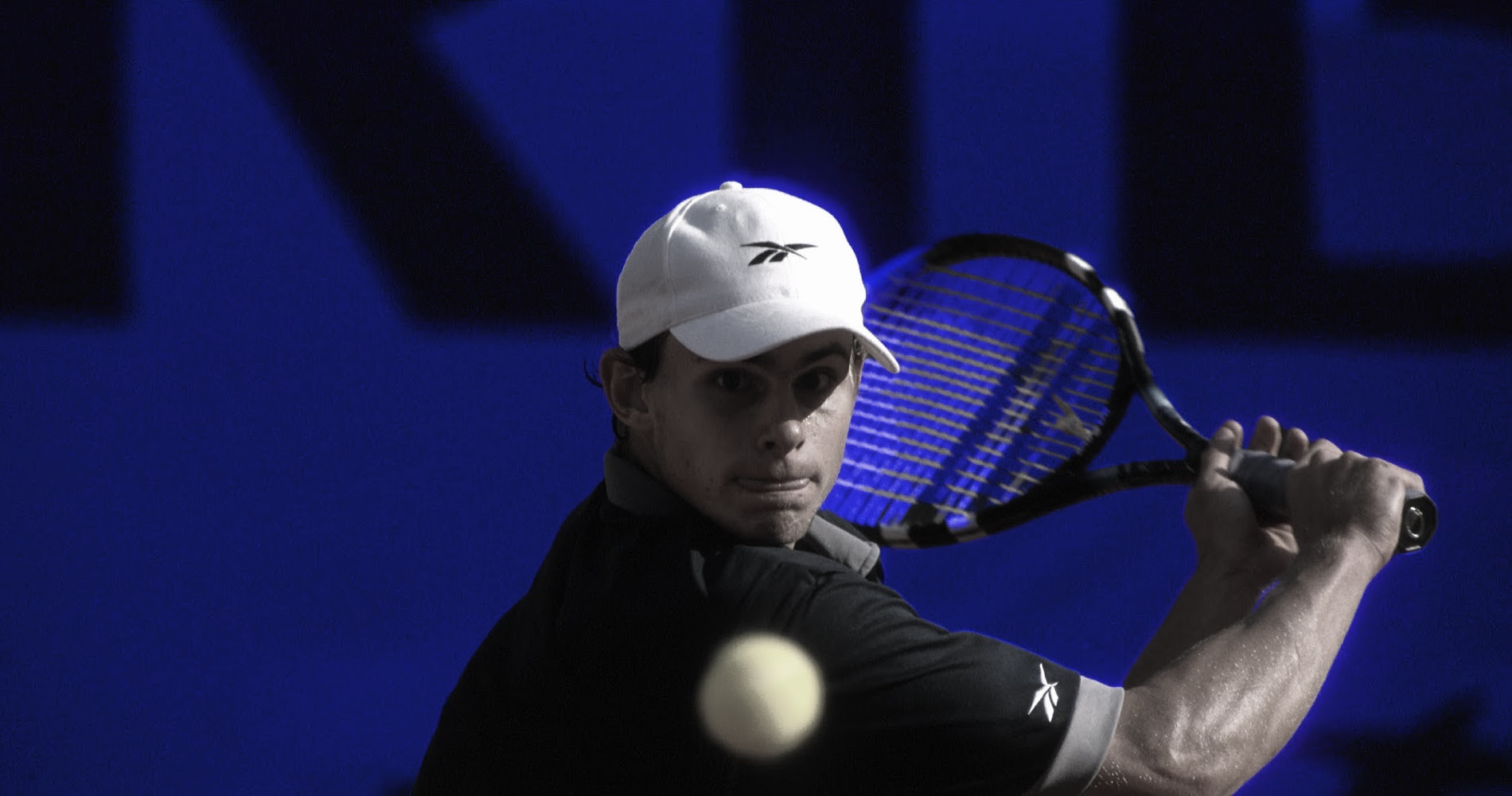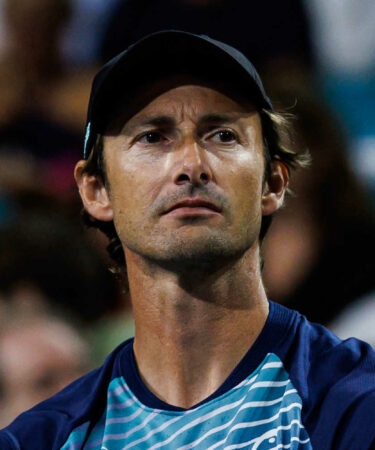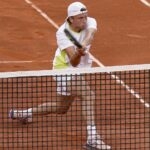November 3, 2003: The day Andy Roddick reached the top of the world rankings for the first time
Each day, Tennis Majors takes you back in time to a milestone moment in tennis history. On this day in 2003, Andy Roddick became the fourth-youngest man to top the world rankings
 Andy Roddick 2003
Image Credit:
© Panoramic / Tennis Majors
Andy Roddick 2003
Image Credit:
© Panoramic / Tennis Majors
What exactly happened on that day?
On this day, November 3, 2003, Andy Roddick became the world’s top-ranked player for the first time. The American had secured that spot three days earlier when he beat Jonas Bjorkman 7-5, 7-6 in the quarter-finals of the Paris Masters, while Juan Carlos Ferrero, who held the spot at the time, had been knocked out in the round of 16 by Jiri Novak (7-5, 7-5). It was the icing on top of a great 2003 season for Roddick, who had claimed his first Grand Slam title in September, defeating Ferrero 6-3, 7-6, 6-3 in the US Open final. Roddick was, at the time, the fourth-youngest player to become world No 1 in men’s tennis history.
The player: Andy Roddick
- Roddick: The young American star who had just won the US Open title

Andy Roddick was born in Nebraska, United States in1982. He had his breakthrough season in 2001 at the age of 19, when he claimed his first three titles on the ATP Tour, reached a Grand Slam quarter-final for the first time at the US Open (lost to Lleyton Hewitt 6-7, 6-3, 6-4, 3-6, 6-4) and finished the season as world No 14. His biggest weapon was undoubtedly his massive serve. That year he set a record at Roland-Garros during his five-set win against Michael Chang, serving 37 aces. He also had a powerful forehand and displayed great athleticism and fighting spirit on court.
In 2002, Roddick confirmed his new status as one of the elite players in the game by clinching two more titles (the biggest being in Memphis, where he defeated James Blake 6-4, 3-6, 7-5 in the final) and finished runner-up in Toronto (defeated by Guillermo Canas 6-4, 7-5). He finished the season ranked No 10 in the world.
“A-Rod” started 2003 by reaching the semi-finals at the Australian Open, where he lost to Rainer Schuettler 7-5, 2-6, 6-3, 6-3. He had probably not fully recovered from his epic win against Younes El Ayanoui in the previous round, in which he prevailed 4-6, 7-6, 4-6, 6-4, 21-19 after five hours of play. At the time, it was the longest fifth set in Grand Slam history.
Roddick then reached the final in Houston (lost to Andre Agassi 3-6, 6-3, 6-4) and captured his first title on European clay in Sankt Polten (defeating Nikolay Davydenko 6-3, 6-2 in the final), but lost to Sargis Sargsian in the first round at Roland-Garros (6-7, 6-1, 6-2, 6-4).
His real bid for the world No 1 ranking began on the grass courts of Queen’s Club, where Roddick triumphed for the first time by defeating Sebastien Grosjean 6-3, 6-3 in the final. That started a string of extraordinary results; he reached the semis at Wimbledon (defeated by Roger Federer 7-6, 6-3, 6-3), triumphed in Indianapolis, Montreal, and Cincinnati to enter the US Open draw as world No 4.
In 2003, there was no clear-cut leader on the men’s tour. The last seven Grand Slams had been won by seven different players (Thomas Johansson, Albert Costa, Hewitt, Pete Sampras, Andre Agassi, Ferrero, and Roger Federer), and at the time several players could have been considered as serious contenders for the No 1 ranking. From January through July, Hewitt and Agassi had been exchanging the top spot.
In New York, Roddick came back from two sets to love down in his semi-final clash against David Nalbandian, saving a match point in the third set before winning in five (6-7, 3-6, 7-6, 6-1, 6-3). In the final, he left no chance for Ferrero and cruised 6-3, 7-6, 6-3. Although the Spaniard became world No 1 the next day, Roddick was not far behind.
The American’s indoor season was not as good as his summer run, but reaching the semi-finals in Basel (lost to Nalbandian 7-5, 7-5) and Paris (lost to Tim Henman, 7-6, 7-6) was enough to make him world No 1 on November 3, 2003.
Aged 21, Roddick trailed only Hewitt, Marat Safin, and John McEnroe in terms of the youngest players to reach the top spot.
“It’s a pretty big accomplishment for me, something I never thought would happen or was possible,” Roddick said, according to ATPtour.com. “To kind of just storm through this summer… it’s definitely a big accomplishment for me and I’m ecstatic about it.”
What next? Roddick reaches four more Grand Slam finals
As Roddick was only 21, it looked like his US Open success would be the first of many. Unfortunately, his losses against Federer in the 2003 Wimbledon semi-finals and later in the semi-finals of the Masters Cup (7-6, 6-2) were signs that his reign wouldn’t be long. He remained No 1 for 13 weeks before the Swiss climbed on top of the ATP rankings for a record 237 consecutive weeks. Roddick would reach four Grand Slam finals in the following years, and he would be defeated each time by Federer , thrice at Wimbledon (2004, 2005, 2009) and once at the US Open (2006).
The American would retire at the end of 2012 and was inducted into the International Tennis Hall of Fame in July 2017.











